
- This graphic is for illustrative purposes only.
- This itinerary is based on estimated times and is subject to change without notice.
ROUTE MAP
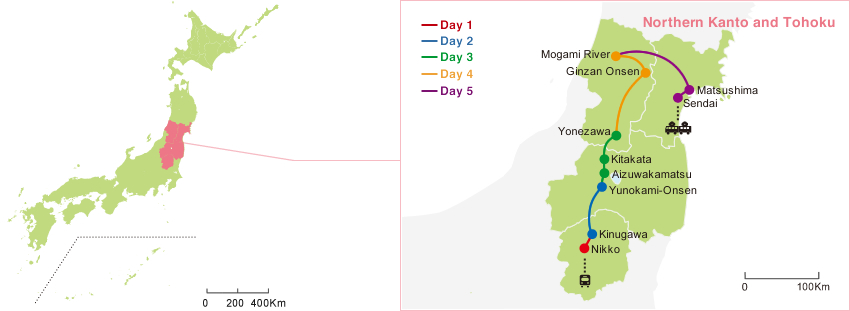
SCHEDULE

*This course starts from Tokyo.
−Access to Tokyo−
| From | Duration | Transportation |
|---|---|---|
| Osaka | about 1.5 hours | |
| Narita Airport | about 1 hour |
Day 1
| Local time | Schedule | Detailed schedule |
|---|---|---|
| Travel |
|
|
| 12:30 Arr. | Admission | Nikko Area
|
| Visit | Nikko Area
|
|
| 18:00 Arr. |
|
Day 2
| Local time | Schedule | Detailed schedule |
|---|---|---|
|
||
| 9:15 Arr. | Admission | Kinugawa Area
|
| 11:00 Dep. |
|
|
| Get on |
|
|
|
||
| 16:30 Dep. | Visit | Yunokami-Onsen Area
|
| 17:15 Arr. |
|
Day 3
| Local time | Schedule | Detailed schedule |
|---|---|---|
|
||
| 9:10 Arr. 10:15 Dep. |
Admission | Aizuwakamatsu Area
|
| 11:00 Arr. 13:30 Dep. |
Visit | Kitakata Area
|
| 14:20 Arr. 16:20 Dep. |
Admission | Yonezawa Area
|
| 17:00 Arr. |
|
Ouchi-juku

Ouchi-juku entered the national spotlight in April 1981 when it was designated as Important Preservation District for Groups of Traditional Buildings. The hip-roofed (yosemune-zukuri) homes lining its streets are one of its noteworthy features. Ouchi-juku historically thrived as a "post town," offering lodging for travelers on the Minami-yama Dori (Aizu Nishi Kaido) that connected Aizu Wakamatsu with Nikko and Imaichi.
Tsuruga Castle
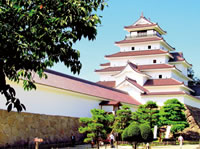
Built in 1384 A.D. by Ashina Naomori, Tsuruga Castle was originally known as Kurokawa Castle. Date Masamune later captured the castle from Ashina Yoshihiro in 1589 but relinquished control to Toyotomi Hideyoshi the following year. Shortly afterward, Gamo Ujisato became the new lord, renovated the castle, renamed it Tsuruga, and named the surrounding town Wakamatsu. During the Boshin War, Tsuruga Castle gained distinction as an impregnable fortress that withstood an intense month-long battle. In March 2011, its donjon was re-roofed with red brick tiles, a rarity among castles in Japan.
Kitakata
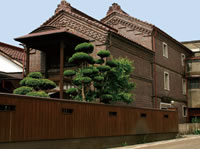
Located in Fukushima Prefecture, the municipality of Kitakata currently has over 4,200 traditional kura storehouses located within its city limits. Visitors have the opportunity to stroll and enjoy the historically rich kura scenery particularly along the main Fureai and Otazuki-kura streets in the downtown district.
Yonezawa Castle Ruins
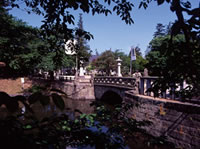
Yonezawa Castle in Yamagata Prefecture was occupied by a series of warlords including Nagai, Date, Gamo, and Uesugi, and was also known as Maizuru or Matsugasaki Castle. The castle structure was dismantled in 1873 and re-opened as Matsugasaki Park the following year. The moat and the earthwork foundation for the castle keep are all that remain today. The ruins of the castle keep are more familiar to local citizens as the site of the Uesugi Shrine. The Kasuga Shrine and Keishouden are also located nearby along with statues of Uesugi Kenshin and Yozan as well as Uesugi Kagekatsu and Naoe Kanetsugu, two personalities placed into the limelight by the NHK taiga drama series, "Tenchijin."
Day 4
| Local time | Schedule | Detailed schedule |
|---|---|---|
|
||
| 10:30 Arr. 11:30 Dep. |
Ginzan Onsen Area
|
|
| Board | Mogami River Area
|
|
| 15:00 Dep. |
|
|
| 17:00 Arr. |
|
Mogamigawa Funakudari

An approximately hour-long boat ride starting from Tozawamura, an important port town for boat traffic on the Mogami River, a mother river which traverses Yamagata Prefecture. Passengers are treated to an array of Mogami Gorge scenery that varies by the season: the budding leaves and cherry blossoms of spring, the crimson foliage of autumn, and winter scenes evocative of Suiboku paintings. The Japanese poet Basho composed a haiku about the Mogami River: samidare o atsumete hayashi Mogami-gawa. This is rendered as "Gathering the rains, of the wet season - swift, the Mogami River."
Naruko Hot Springs
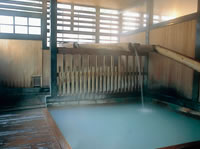
Endowed with a wealth of hot spring resources and qualities, the Naruko Hot Spring Villages are one of eastern Japan's leading hot spring resorts, boasting nine of the 11 types of hot spring qualities known in Japan. The Naruko Hot Springs comprise five villages: Naruko, Higashi-naruko, Kawatabi, Nakayama-daira, and Onikobe. Visitors may purchase yu-meguri passes that allow them to easily experience the pleasures of bathing in a variety of hot spring waters.
Day 5
| Local time | Schedule | Detailed schedule |
|---|---|---|
| Depart from hotel | ||
| 10:00 Arr. | Admission | Matsushima Area
|
| Board | Matsushima Area
|
|
| 13:00 Dep. | Get off |
|
| 13:45 Arr. 16:00 Dep. |
Admission | Sendai Area
|
| Get on |
|
|
|
||
|
Zuigan-ji
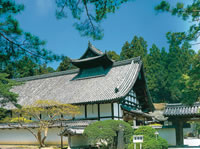
The principal Zen Buddhist temple in Oshu, Iwate Prefecture, Zuigan-ji was founded by Jikaku Daishi Ennin in 828 A.D. This was the family temple of the Date clan.
Matsushima
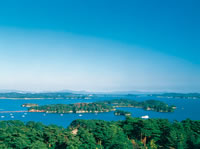
Comprising over 260 small and large islands, Matsushima Bay will impress visitors with scenery exemplifying the four seasons of the Japanese archipelago. Four spots of Matsushima Shidaikan offer a panoramic view of the Matsushima islands. Visitors may also experience the scenic views from Saigyo Modoshi No Matsu Park or take relaxing excursion boat tours around the islands.
Sendai Castle Ruins
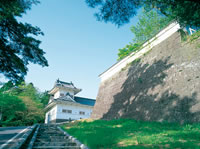
These are the ruins of Sendai Castle (Aoba Castle), built by Date Masamune, founder of the Sendai Domain. The ruins still convey the imagery of a solid mountain castle known as a natural fortress that exploited the natural topography of surrounding forests and bluffs.

